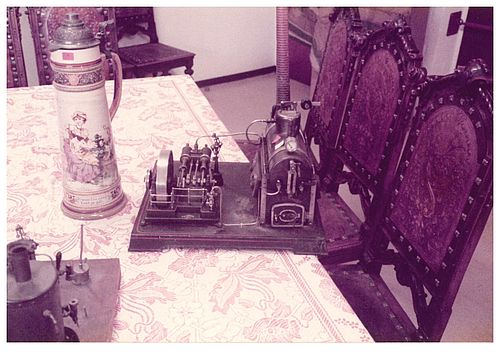The Founding of the Museum in the 1980s
The Deutsches Technikmuseum, then known as the Museum für Verkehr und Technik (Transport and Technology), was founded in West Berlin in 1982 and opened in 1983. Director Günther Gottmann and his team were focused on setting up and enlarging the collection.
To this end, objects from the former GDR were regularly purchased before the fall of the Berlin Wall in 1989. During that period, technical cultural assets that were no longer so easy to obtain in West Berlin and West Germany could be purchased there. These included working machines that were needed for demonstration purposes in the museum, but also outstanding individual pieces such as a mill, locomotives and wagons, a steamship and historic motor vehicles.
Seller and intermediaries

SDTB
The seller in the GDR was the Kunst und Antiquitäten GmbH (KuA), a foreign trade company within the working group "Kommerzielle Koordinierung (KoKo)" The sale of works of art, cultural objects and consumer goods to Western countries was an important source of income for the GDR's state budget.
Deutsches Technikmuseum was not allowed to make its own purchases in the GDR and thus needed intermediaries. In most cases, the Berlin company "Antik-Shop Antiquitäten Galerie GmbH & Co. Handels-KG“ was the agent. Its owner was the Berlin businessman Wolfgang Böttger. The "Antik-Shop" had sales rooms in Berlin's Kaufhaus des Westens (KaDeWe), for which it bought antiques from the GDR. However, the museum had also been in direct contact with the KuA since at least 1986. Photos and documents verify that museum employees made regular trips to Mühlenbeck, where the KuA's main warehouse was located.
How did these objects end up on the market?
The KuA bought its goods directly from private individuals, traders or state-owned companies. But not all sales were voluntary: private company owners were expropriated, the property of fugitives from the Republic was confiscated and collectors were forced to surrender their collections through sham tax proceedings. Museums were also forced to hand over objects from their collections.
Objects from the GDR at the Deutsches Technikmuseum

SDTB
Research to date has revealed that around 160 objects and assortments in the collection of the Deutsches Technikmuseum originate from the GDR. Research into these items has already begun.
To this end, documents such as contracts, transportation papers and invoices are being examined both in the museum archive as well as in other archives. Of particular importance are the KuA delivery lists, known as "specifications", on which letter-number combinations provide information about an object's origins. For example, "ZL" stands for the KuA central warehouse. These codes are referred to as "sticker numbers" because they are often found on stickers affixed to the objects themselves.
The task for the coming years will be to decipher the codes, to determine that all objects are unequivocally identified in the delivery lists and to find out more about their provenance and previous owners.

